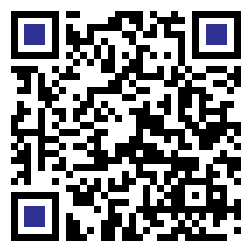Augmented Reality Dalam Mendeteksi Produk Rotan Menggunakan Metode Multimedia Development Life Cycle (MDLC)
DOI:
https://doi.org/10.54367/means.v6i2.1512Keywords:
Augmented Reality, MDLC, Produk Rotan, Multimedia Development Life CycleAbstract
The furniture business has developed quite well every year, but the promotions used by the company still use the usual methods, such as using brochures that only display 2D information and images. With so much competition, consumers want something unique and different so they can find out more detailed and real product information offered. Augmented reality is the right technology to meet these consumer needs. Augmented reality is a technology that combines the virtual world with the real world directly. Therefore, an application was designed that functions as a company profile as well as displays 3D rattan chair products using Augmented reality technology on android devices. The method used in this research is the Multimedia Development Life Cycle (MDLC) which includes Concept, Design, Material Collecting, Assembly, Testing, and Distribution. This Augmented reality application requires streaming video taken from a smartphone camera as an input source, then this application will track and detect markers using a tracking system, after the marker is detected, the 3D chair model in the catalog will appear above the marker as if it were a chair model. it's real. the results of the hypothesis test with a significant level of 0.139, which is greater than 0.05, then what is accepted is H1. It can be stated that an augmented reality-based electronic catalog application can increase buying interest in potential consumers of Raffi cushion rotanReferences
A. Kurniawan, A. Windharto, and N. A. Rizkiyah, “Desain Sepeda Rotan dengan Rekayasa Material Rotan Resin,” J. Desain Idea J. Desain Prod. Ind. Inst. Teknol. Sepuluh Nop. Surabaya, vol. 19, no. 1, p. 13, 2020, doi: 10.12962/iptek_desain.v19i1.7010.
M. Mustika, E. P. A. Sugara, and M. Pratiwi, “Pengembangan Media Pembelajaran Interaktif dengan Menggunakan Metode Multimedia Development Life Cycle,” J. Online Inform., vol. 2, no. 2, p. 121, 2018, doi: 10.15575/join.v2i2.139.
D. I. D. Luwoo and K. T. Jaya, “PENGEMBANGAN USAHA PENGRAJIN ANYAMAN ROTAN,” vol. 6, no. 2002, 2019.
K. C. Brata and A. H. Brata, “Pengembangan Aplikasi Mobile Augmented Reality untuk Mendukung Pengenalan Koleksi Museum,” J. Teknol. Inf. dan Ilmu Komput., vol. 5, no. 3, p. 347, 2018, doi: 10.25126/jtiik.201853798.
M. Chylinski, J. Heller, T. Hilken, D. I. Keeling, D. Mahr, and K. de Ruyter, “Augmented reality marketing: A technology-enabled approach to situated customer experience,” Australas. Mark. J., no. xxxx, 2020, doi: 10.1016/j.ausmj.2020.04.004.
L. F. de Souza Cardoso, F. C. M. Q. Mariano, and E. R. Zorzal, “A survey of industrial augmented reality,” Comput. Ind. Eng., vol. 139, p. 106159, 2020, doi: 10.1016/j.cie.2019.106159.
T. Masood and J. Egger, “Adopting augmented reality in the age of industrial digitalisation,” Comput. Ind., vol. 115, p. 103112, 2020, doi: 10.1016/j.compind.2019.07.002.
N. Hockly, “Technology for the language teacher: augmented reality,” ELT J., vol. 73, no. 3, pp. 328–334, 2019, doi: 10.1093/elt/ccz020.
L. López-Faican and J. Jaen, “EmoFindAR: Evaluation of a mobile multiplayer augmented reality game for primary school children,” Comput. Educ., vol. 149, no. January, 2020, doi: 10.1016/j.compedu.2020.103814.















